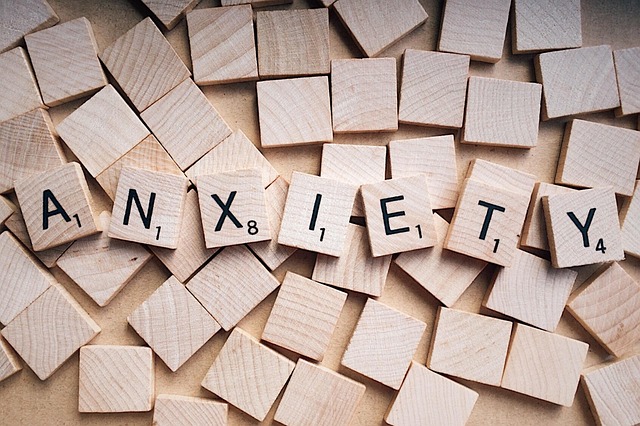Longmont Somatic Experiencing (SE) therapy equips mental health professionals with tools to assess and mitigate risks in their practice, focusing on the mind-body connection. SE integrates mindfulness meditation and somatic experiences to create safe spaces for clients processing trauma and releases physical tension associated with stress. By addressing underlying physical symptoms, SE enhances communication strategies and reduces unhealthy behaviors. Holistic risk assessment techniques, combined with strategic planning and self-care, prevent burnout among professionals, ensuring resilience and optimal client care in Longmont.
Mental health professionals face unique challenges, requiring comprehensive risk assessment strategies. This article delves into essential aspects of mental health practice, focusing on Longmont Somatic Experiencing Therapy (SE) as a potent tool for mitigating risks. We explore common dangers and hurdles, from secondary trauma to burnout, offering practical solutions for effective risk management and professional well-being. Understanding these dynamics is crucial for fostering resilient and healthy practices.
- Understanding Risk Assessment in Mental Health Practice
- The Role of Longmont Somatic Experiencing Therapy (SE) in Mitigating Risks
- Common Risks and Challenges Faced by Mental Health Professionals
- Strategies for Effective Risk Management and Professional Well-being
Understanding Risk Assessment in Mental Health Practice

Risk assessment is a fundamental aspect of mental health practice, ensuring professionals can deliver effective and safe therapy. For practitioners like those offering Longmont Somatic Experiencing Therapy (SE), understanding this process involves recognizing potential hazards within the therapeutic relationship and environment. These risks may include emotional distress, suicide ideation, or the revelation of traumatic memories that could trigger severe reactions in clients.
By integrating mindfulness meditation techniques and empathy-building strategies, mental health professionals can create a safe space while navigating these complexities. Public awareness campaigns development further contributes to risk mitigation by fostering an environment where individuals feel encouraged to seek help without stigma. Effective risk assessment empowers therapists to adapt their approaches, providing tailored support for each client’s unique needs and vulnerabilities.
The Role of Longmont Somatic Experiencing Therapy (SE) in Mitigating Risks

Longmont Somatic Experiencing Therapy (SE) offers a powerful toolset for mental health professionals to mitigate risks and enhance their practice. SE focuses on the mind-body connection, helping individuals process traumatic memories and release physical tension associated with stress. By incorporating techniques such as mindfulness meditation and somatic experiences, therapists can create a safe space for clients to explore and express emotions freely. This approach not only improves communication strategies but also empowers clients with coping skills development, reducing the risk of relapsing into unhealthy behaviors or triggering traumatic responses.
The integration of SE into therapy sessions allows mental health professionals to address underlying physical symptoms that often accompany mental distress. By facilitating a deeper understanding of the body’s language, therapists can better recognize and respond to subtle cues, ensuring more effective treatment. This holistic approach, combined with traditional therapeutic methods, fosters a comprehensive healing environment, ultimately lowering risks associated with untreated or inadequately managed mental health conditions.
Common Risks and Challenges Faced by Mental Health Professionals

Mental health professionals often encounter a unique set of risks and challenges that can impact their well-being. One prominent issue is burnout, which arises from prolonged exposure to patients’ distressing experiences. This high-stress environment, coupled with demanding caseloads and limited resources, can lead to emotional exhaustion and reduced job satisfaction. Additionally, these professionals may struggle with self-esteem improvement, as they confront complex trauma and often face difficult ethical dilemmas.
Another significant challenge is navigating the diverse cultural landscapes of their clients. Healthcare provider cultural competency training becomes essential in this regard, enabling professionals to offer more tailored and effective treatment. Moreover, mental health workers must manage their own stress through workshops and organizations that specialize in stress management, given the demanding nature of their work. The Longmont Somatic Experiencing Therapy, for instance, offers such programs, contributing to a healthier professional ecosystem.
Strategies for Effective Risk Management and Professional Well-being

Mental health professionals constantly navigate complex situations, making effective risk management a cornerstone of their practice. A holistic approach to risk assessment, incorporating techniques like those found in Somatic Experiencing Therapy from Longmont practitioners, can mitigate potential harms while fostering resilience. By integrating evidence-based practices into clinical work, professionals can enhance their ability to manage high-risk cases and prevent burnout, which is a significant concern within the healthcare industry, especially among mental health providers.
Strategic planning involves setting clear boundaries, implementing self-care protocols, and staying current with research in mental health education programs design. Mental Health Policy Analysis and Advocacy also plays a crucial role in creating systemic changes that support professionals’ well-being. Through collaborative efforts, healthcare organizations can cultivate environments where practitioners feel valued, supported, and empowered to provide the best possible care for their clients.
Mental health professionals play a vital role in enhancing their clients’ well-being, but they also face unique risks. Understanding risk assessment is crucial for navigating these challenges effectively. Integrating practices like Longmont Somatic Experiencing Therapy (SE) offers a promising approach to mitigate potential dangers and promote professional resilience. By recognizing common risks and implementing strategic risk management techniques, mental health practitioners can ensure their safety while fostering a supportive environment for their clients’ transformation.










